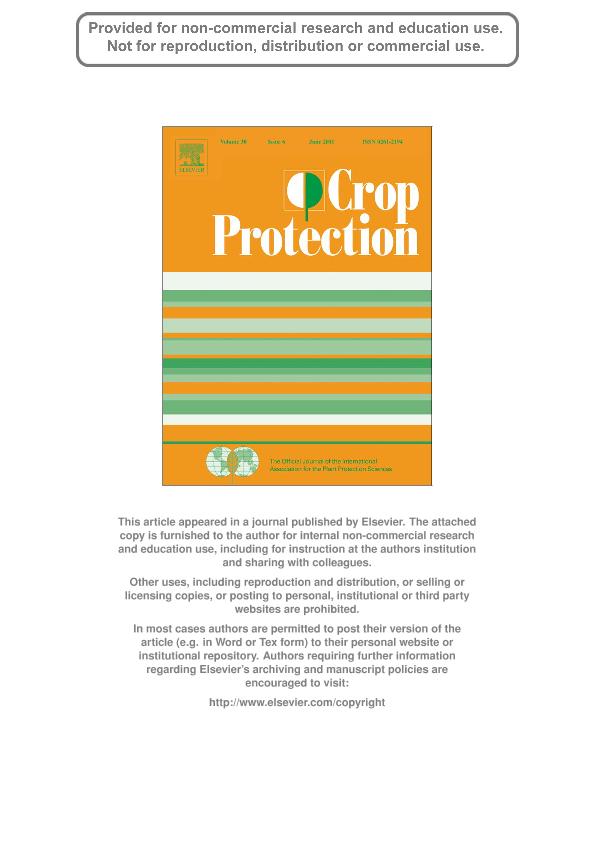Artículo
Satellite images as a tool to identify accelerated atrazine mineralization in soils
Fecha de publicación:
06/2011
Editorial:
Elsevier
Revista:
Crop Protection
ISSN:
0261-2194
Idioma:
Inglés
Tipo de recurso:
Artículo publicado
Clasificación temática:
Resumen
Microflora adaptation to atrazine (6-chloro-N2-ethyl-N4-isopropyl-1,3,5-triazine-2,4-diamine) mineralization due to its frequent use on the same soil has been clearly demonstrated. Studies show accelerated herbicide mineralization with mineralization percentages reaching up to 60% of the applied atrazine in a few days, which results in decreased weed control efficiency. Frequently, atrazine doses are increased to circumvent low efficiency, although this solution does not solve accelerated atrazine mineralization. The identification of soils with accelerated atrazine mineralization to guide selection of adequate management strategies and achieve good atrazine performance in adapted soils is critical. The present research assessed accelerated atrazine mineralization recognition on the basis of previous years maize (Zea mays L.) cropping as an indicator of atrazine use identified using satellite images. Three years of crop sequences were monitored by visual interpretation of Landsat satellite images. Bands 3, 4, and 5 were evaluated and corresponded, respectively, to red, near infrared, and mid-infrared. Vegetation was distinguished by selecting the R:4 G:5 B:3 color composition. Prior to assessment, atrazine behavior was evaluated in soils with high (SH) and low (SL) atrazine mineralization capacity. 14C-ring-labeled atrazine distribution between extractable, non-extractable, and mineralized soil culture fractions was subject to monitoring. Atrazine mineralization was determined by soil laboratory incubation. These included some soils of known past use and others with history predicted by satellite imagery. Topsoil (0-10 cm) samples were extracted according to two soil sampling strategies: Type A sampling (designated site A) consisted of 25 topsoil samples with known history, and type B sampling (designated site B) comprised 20 topsoil samples from history inferred via satellite imagery.Atrazine mineralization was monitored for 23 days under laboratory conditions. Soil 14C applied mineralization ranged from 0.3-73.0% and 0.2-30.0% in sites A and B, respectively. These broad ranges were closely related to maize presence/absence in the crop rotation at both sites. Following three straight growing seasons of maize, atrazine mineralization capacity reached a plateau in site A soils, with similar results observed in site B soils. This pattern suggests that satellite image information will be of utility to soil managers in selecting strategies to improve atrazine efficiency, including simultaneous fertilization, post-emergence atrazine applications, and choice of maize hybrids based on canopy architecture and weed competitiveness.
Archivos asociados
Licencia
Identificadores
Colecciones
Articulos(INBA)
Articulos de INST.DE INVEST. EN BIOCIENCIAS AGRICOLAS Y AMBIENTALES
Articulos de INST.DE INVEST. EN BIOCIENCIAS AGRICOLAS Y AMBIENTALES
Citación
Hang, Susana; Mercuri, Pablo; Diaz Zorita, Martin; Havrylenko, Sofia; Berriuso, Enrique; Satellite images as a tool to identify accelerated atrazine mineralization in soils; Elsevier; Crop Protection; 30; 6; 6-2011; 663-670
Compartir
Altmétricas




